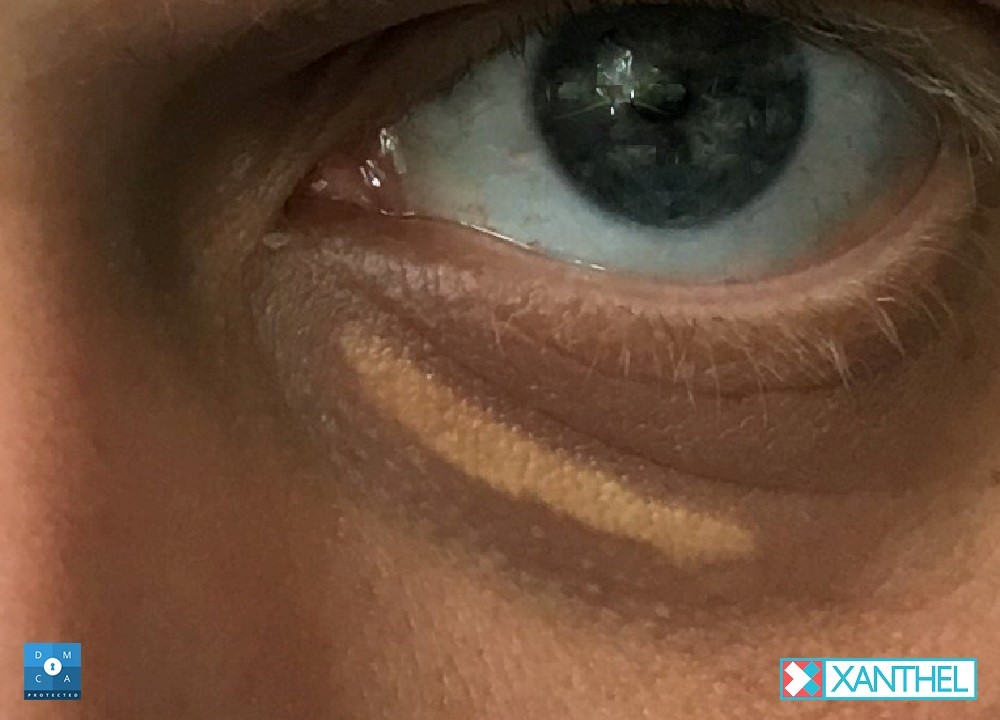Visual Guide – Understanding the Appearance of Xanthelasma
Visual Guide – Understanding the Appearance of Xanthelasma
It is a small detail that can change the way you see your own face. A subtle shift in the landscape of your skin, often noticed during a quiet moment in front of the mirror. It is a yellowish spot, appearing on an eyelid where there was clear skin before. It does not hurt or cause irritation, but its persistence is unsettling. This is the visual reality of xanthelasma, and understanding its distinct appearance is the first step toward addressing it.
The Signature Look of Xanthelasma
Xanthelasma has a unique visual profile that sets it apart from other skin blemishes. Its characteristics are consistent, creating a clear picture for identification. The most defining feature is its color, a creamy yellow or off-white hue that contrasts with the surrounding skin tone. These patches are not inflamed or red, they are simply deposits of color under the skin’s surface.
They feel soft to the touch, almost velvety, and are typically flat-topped or only slightly raised. Imagine a small, soft deposit of pale wax resting just beneath the translucent skin of the eyelid. Their borders are usually well-defined, though they can sometimes have an irregular shape. They might begin as a single, tiny spot, almost like a pinhead, and can remain that way or slowly grow over time.

Mapping the Location: Where Xanthelasma Appears
The location of xanthelasma is one of its most telltale signs. These plaques have a strong preference for the delicate skin of the eyelids. Most commonly, they emerge near the inner corner of the eye, on either the upper or lower lid.
A key aspect of their appearance is a tendency toward symmetry. It is very common for the plaques to develop on both eyes in a similar location, creating a mirror-image effect. A small patch on the upper left eyelid is often accompanied by a similar patch on the upper right. This bilateral presentation is a classic visual clue that helps distinguish xanthelasma from random, one-off blemishes. These deposits are a specific type of xanthoma, which are cholesterol deposits in the skin.

The Evolution of Appearance: How Xanthelasma Progresses
Xanthelasma does not appear in its final form overnight. Its visual journey is typically a slow, gradual one. The initial spot may be so small it goes unnoticed for months. Over time, it can slowly expand, becoming wider or longer. In some cases, multiple small spots can appear and eventually merge, forming a larger, more prominent patch that follows the natural curve of the eyelid.
Once present, these plaques do not fade or resolve on their own. They are persistent fixtures that can become a permanent part of your facial appearance. Their stability or slow growth is a hallmark of the condition, unlike other skin issues that may flare up and then recede. The American Academy of Dermatology notes that while harmless, they can grow larger and become more noticeable over time, adding to the cosmetic concern.

Distinguishing Xanthelasma from Other Blemishes
The eyelid area can host a few different types of bumps and spots, but the appearance of xanthelasma is distinct. Milia, for instance, are tiny, hard, pearl-like cysts that are very firm to the touch, unlike the soft texture of xanthelasma. Syringomas are another type of growth, but they are typically skin-colored, smaller, and appear in clusters. A stye is a painful, red, and swollen infection of an oil gland, bearing no resemblance to the passive, painless nature of xanthelasma. Understanding these visual differences is crucial, and a professional can always help confirm what you are seeing. A detailed overview of various eyelid bumps can offer further clarity.
Recognizing the visual guideposts of xanthelasma, from its soft, yellowish look to its preferential placement near the corner of the eye, demystifies the condition. It moves from being an unknown spot to a known cosmetic issue. When you understand what you are looking at, the next logical step is to explore how to address its appearance and restore your confidence.

A Clearer Path Forward for Your Skin’s Appearance
For those seeking a targeted, at-home cosmetic solution, Xanthel® Gel is engineered to address the distinct appearance of xanthelasma. It provides a focused approach to aesthetic improvement, designed specifically for these unique plaques. The primary goal of Xanthel® Gel is to visibly diminish the look of xanthelasma, often with just a single application.
Its selectively formulated composition works to cosmetically refine the plaques, helping to restore a clearer, more uniform skin appearance around the delicate eye area. Designed for effectiveness across all skin tones, it offers a universal solution for anyone feeling self-conscious about their xanthelasma. Instead of just trying to cover the issue, you can actively address its appearance. With free worldwide delivery, the path to visible refinement is more accessible than ever. Choose confidence. Discover Xanthel® Gel today.

Xanthel ® Cosmetic Gel
A focused cosmetic gel formulated specifically to improve the appearance of eyelids bearing xanthelasma plaques. Its composition is selectively designed for cosmetic impact across all skin tones, offering a straightforward, at-home option for managing the look of these blemishes.
A Singular Application
The power of Xanthel ® is in its simplicity. It is formulated for a single, one-time cosmetic application. This focused approach is designed to visibly diminish the appearance of xanthelasma plaques, removing the need for daily or repeat uses.
Legal: This product is for cosmetic use only. This product is not intended to diagnose, treat, cure, or prevent any medical condition. Consult a healthcare professional regarding any skin condition.